Zumo Shield for Arduino, v1.3
Available with a lead time
Expect dispatch between May 02 and May 05
Quantity Discounts:
- 6+ $65.41 (exc GST)
- 12+ $63.36 (exc GST)
 |
Zumo Shield for Arduino, v1.3, with included through-hole components installed. |
|---|
The Zumo Shield is designed specifically to be a convenient interface between a Zumo chassis and an A-Star 32U4 Prime, Arduino Uno, or Arduino Leonardo. The shield mounts directly to the chassis, connecting to its battery terminals and motors, and the A-Star Prime or Arduino plugs into the shield’s male header pins, face down. The shield provides all the electronics necessary to power the motors and includes some additional fun components for making a more interesting robot, such as a buzzer for making sounds, and a 3-axis accelerometer, compass, and gyroscope for sensing impacts and tracking orientation.
With the Zumo Shield and an Arduino (or compatible board like the A-Star Prime), the Zumo chassis becomes a low-profile, Arduino-controlled tracked robot that is less than 10 cm on each side (small enough to qualify for Mini-Sumo competitions). It works with a variety of micro metal gearmotors to allow for a customizable combination of torque and speed, and a stainless steel sumo blade is available for applications that involve pushing around other objects. Arduino libraries and sample sketches are available for quickly getting a Zumo robot up and running.
|
|
This shield is also available as part of Pololu's Zumo Robot kit for Arduino, which bundles it with a Zumo chassis and Zumo blade, and in Pololu's Zumo Robot for Arduino, which is preassembled with 75:1 HP micro metal gearmotors and a Zumo reflectance sensor array.
This is the v1.3 version of the Zumo Shield. It uses an LSM6DS33 accelerometer and gyro and an LIS3MDL magnetometer, replacing the LSM303D and L3GD20H sensors on the previous v1.2 revision. You can use Pololu's updated Zumo Shield Arduino library to help you write code that will work with the inertial sensors on any revision.
In addition, the power switch and pushbuttons on the v1.3 shield are surface-mount components instead of through-hole parts like those on the v1.2 version.
For more information, see the user’s guide.
 |
Features
- Integrated DRV8835 dual motor drivers capable of delivering enough current for two high-power (HP) micro metal gearmotors. See the Zumo chassis product page for specific motor suggestions.
- Buzzer for playing simple sounds and music. The buzzer is controlled by one of the Arduino’s PWM outputs, so the tones can be generated in the background without taking up a lot of processing power.
- Integrated LSM6DS33 3-axis accelerometer and gyro and LIS3MDL 3-axis magnetometer. These inertial sensors can be used for applications like sensing impacts to the Zumo and measuring its rotation.
- Optional user pushbutton on pin 12.
- 7.5 V boost regulator for powering the Arduino from the Zumo’s 4 AA batteries.
- Convenient access to Arduino I/O lines, the pin 13 user LED, and the Arduino reset line via the shield.
- General-purpose prototyping areas and an expansion area at the front for connecting additional sensors (it is easy to add a Zumo reflectance sensor array or up to five QTR sensors for edge detection or line following).
- Compatible with the Arduino Uno R3 and Arduino Leonardo, and can also be used with older Arduinos that have the same form factor, like the Duemilanove.
- An Arduino library and sample code make getting started easy.
- Detailed user’s guide with assembly instructions.
Included Components
The Zumo Shield ships with all of the components required for shield assembly, as shown in the main product picture. Note that soldering is required; please see the user’s guide for detailed assembly instructions. This shield does not include motors or the Zumo chassis itself, though it is available as part of a Zumo Robot kit for Arduino that includes everything you need to build your Zumo robot except motors, an Arduino, and batteries. If you just want a robot that is already put together, Pololu also sell a fully assembled Zumo Robot for Arduino – just add batteries and an Arduino or A-Star Prime and it is ready to go.
 |
Zumo chassis being assembled with two Micro Metal Gearmotor. |
|---|
Required Accessories (not included)
To use this shield you will need a few additional parts:
- A Zumo chassis kit. This shield is also available as part of a Zumo robot kit bundled with the Zumo chassis kit and a Zumo blade and part of a preassembled Zumo Robot.
- Two micro metal gearmotors. These gearmotors are available in several power options and a wide variety of gear ratios, allowing for a customizable combination of torque and speed. The Zumo Shield can deliver enough power for all of the micro metal gearmotors Pololu carry, including the high-power (HP) versions. Note that some gear ratios are better suited for the Zumo than others; please see the Zumo chassis kit product page for specific motor suggestions.
- Four AA batteries. The Zumo chassis works with both alkaline and NiMH batteries, though Pololu recommend rechargeable NiMH cells.
- An Arduino or compatible control board. The Zumo Shield works with the A-Star 32U4 Prime, Arduino Uno and Arduino Leonardo. It is not compatible with the Arduino Mega or Due, but it can be used with older Arduinos that have the same form factor as the Uno, such as the Duemilanove. (Other Arduino-compatible controllers might work with the Zumo robot, but support for them will be limited and they might require modification; for example, one customer got his Zumo robot working with the Freescale FRDM-KL25Z board.)
Optional Accessories
 |
Zumo reflectance sensor array on a Zumo robot, bottom view. |
|---|
- Zumo reflectance sensor array. This sensor bar mounts along the front edge of the Zumo shield and allows the Zumo to detect features on the ground in front of it, such as lines for following or edges for avoiding (such as the rim of a sumo ring or the edge of a table). It is designed specifically for use with the Zumo shield.
- Zumo blade for pushing objects and other robots around (the blade is included if you get the Zumo robot kit).
- iMAX-B6AC battery charger for charging the Zumo’s battery’s through the Zumo Shield’s 2-pin charge port. Note that you only need a battery charger if you plan on powering the Zumo with rechargeable cells, and that charger should be capable of charging 4 NiMH cells in series. Alternatively, since the Zumo just uses ordinary AA batteris, you can use AA chargers (into which you stick the individual cells) available at most general electronics stores.
- Optical rangefinders for obstacle/opponent detection.
- Connectors (headers, jumper wires, etc) for adding more sensors.
Comparison with the Zumo 32U4 robot
The newer Zumo 32U4 is another robot based on the Zumo chassis. It is a more highly integrated robot than the Zumo robot for Arduino, with enhancements that include a built-in Arduino-compatible ATmega32U4 microcontroller (the same one used in the Arduino Leonardo and A-Star 32U4 boards), an LCD, encoders for closed-loop motor control, and proximity sensors for obstacle detection. The Zumo 32U4 main board effectively combines the functions of the Zumo Shield and the separate Arduino controller into a single, compact board that is just as easy to program as a standard Arduino or A-Star thanks to its USB interface and preloaded Arduino-compatible bootloader.
 |
A Zumo 32U4 robot (left) and a Zumo robot for Arduino with an A-Star 32U4 Prime LV (right). |
|---|
Some of the pin mappings and software libraries differ between the Zumo 32U4 and Zumo robot for Arduino, so programs written for one robot generally need to be modified to work on the other.
People often buy this product together with:
 | Zumo Chassis Kit (No Motors) |
 | Zumo Reflectance Sensor Array |
Identifying markings
| PCB dev codes: | zum01d |
|---|---|
| Other PCB markings: | 0J12920 |
Documentation and other information
-
Pololu Zumo Shield for Arduino User’s Guide (Printable PDF)
User’s manual for the Pololu Zumo Shield for Arduino.
File downloads
-
Schematic diagram of the Zumo Shield for Arduino, v1.3 (183k pdf)
-
Zumo Shield front expansion pinout (552k pdf)
-
Dimension diagram of the Zumo Shield for Arduino, v1.3 (657k pdf)
-
3D model of the Zumo Shield for Arduino, v1.3 (17MB step)
-
Drill guide for the Zumo Shield for Arduino, v1.3 (219k dxf)
This DXF drawing shows the locations of all of the board’s holes.
-
Guide utilisateur du Robot Zumo Pololu (2MB pdf)
Un guide complet pour assembler, utiliser et exploiter rapidement votre Robot Zumo (version 0.1). Note: This French translation of Pololu's Zumo Robot for Arduino user’s guide was made by Pololu's distributor MCHobby.
Recommended links
-
This library and examples for Arduino-compatible boards makes it easy to program an Arduino-controlled robot built with Pololu’s Zumo Shield or Zumo robot kit (also available fully assembled).
-
Simulink Library for Zumo Robot
This library can be used to program an Arduino-controlled Zumo through MATLAB and Simulink. It provides driver blocks for all the sensors present on the Zumo Robot as well as example models showing their usage.
-
How to program a Zumo robot with Simulink
This tutorial on the Adafruit Learning System guides you through the process of programming a Zumo robot with Simulink.
-
MicroPython library for the Zumo Robot with pyboard or Raspberry Pi Pico
This MicroPython library from Pololu distributor MC Hobby allows a MicroPython pyboard or Raspberry Pi Pico to control a Zumo Robot for Arduino. MC Hobby has adapter boards that let you easily connect either controller to the Zumo Shield. Documentation is available in both French and English.
-
Pixy Pet Robot tutorial: adding color vision to the Zumo Robot for Arduino with a Pixy CMUCam-5
This tutorial from Adafruit shows how to pair a Pixy CMUCam-5 vision system with the Zumo Robot for Arduino to enable it to chase objects or follow you around.
-
This article was written by Professor Erich Styger for his class on embedded systems programming at the Lucerne University of Applied Sciences and Arts. It describes various ways to tweak the performance of a Zumo to be more competitive in a Mini Sumo competition. Note that his Zumos use a custom PCB rather than Pololu's Zumo shield for Arduino; Pololu's shield has a lot of capacitance in parallel with the batteries that generally prevents the “battery inertia” problem Erich describes.
-
This robot is uses Pololu's Zumo robot kit, 75:1 micro metal gearmotors, and a Zumo reflectance sensor array. Instead of an Arduino it uses a Freescale FRDM-KL25Z as the microcontroller board, and sample code is available for line following and maze solving. By Erich, March 2013.
Exact shipping can be calculated on the view cart page (no login required).
Products that weigh more than 0.5 KG may cost more than what's shown (for example, test equipment, machines, >500mL liquids, etc).
We deliver Australia-wide with these options (depends on the final destination - you can get a quote on the view cart page):
- $3+ for Stamped Mail (typically 10+ business days, not tracked, only available on selected small items)
- $7+ for Standard Post (typically 6+ business days, tracked)
- $11+ for Express Post (typically 2+ business days, tracked)
- Pickup - Free! Only available to customers who live in the Newcastle region (must order online and only pickup after we email to notify you the order is ready). Orders placed after 2PM may not be ready until the following business day.
Non-metro addresses in WA, NT, SA & TAS can take 2+ days in addition to the above information.
Some batteries (such as LiPo) can't be shipped by Air. During checkout, Express Post and International Methods will not be an option if you have that type of battery in your shopping cart.
International Orders - the following rates are for New Zealand and will vary for other countries:
- $12+ for Pack and Track (3+ days, tracked)
- $16+ for Express International (2-5 days, tracked)
If you order lots of gear, the postage amount will increase based on the weight of your order.
Our physical address (here's a PDF which includes other key business details):
Unit 18, 132 Garden Grove Parade
Adamstown
NSW, 2289
Australia
Take a look at our customer service page if you have other questions such as "do we do purchase orders" (yes!) or "are prices GST inclusive" (yes they are!). We're here to help - get in touch with us to talk shop.
Have a product question? We're here to help!
Guides
The Maker Revolution
Projects
Spectral Animations with a DIY MSGEQ7 I2C Device
VisionSphere: Camera Motion Detection for Raspberry Pi
Arduino E-Paper Clock
Makers love reviews as much as you do, please follow this link to review the products you have purchased.

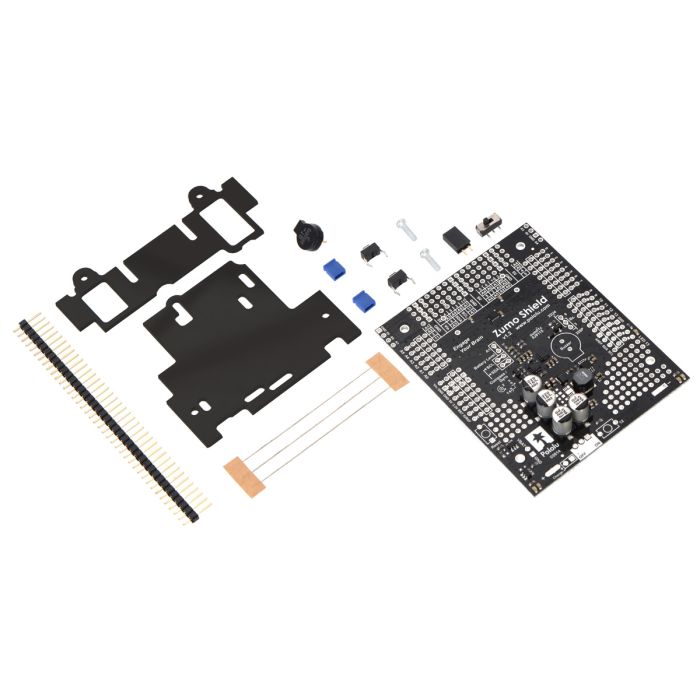

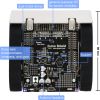
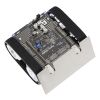








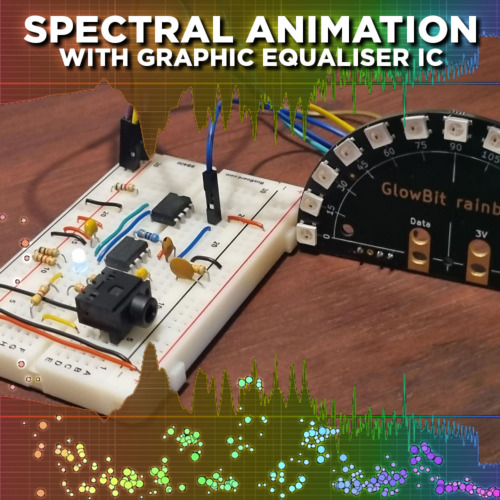

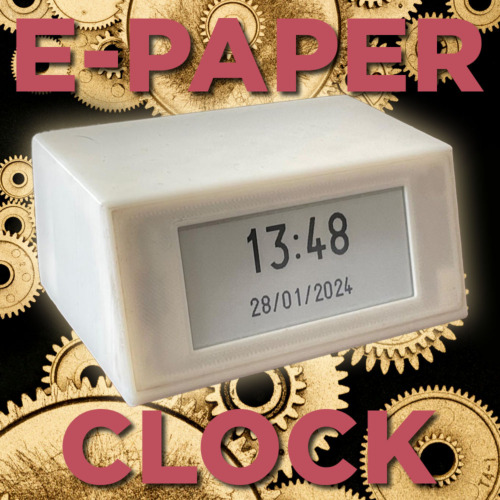

Product Comments